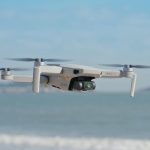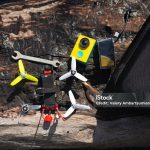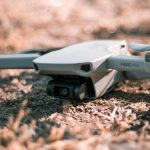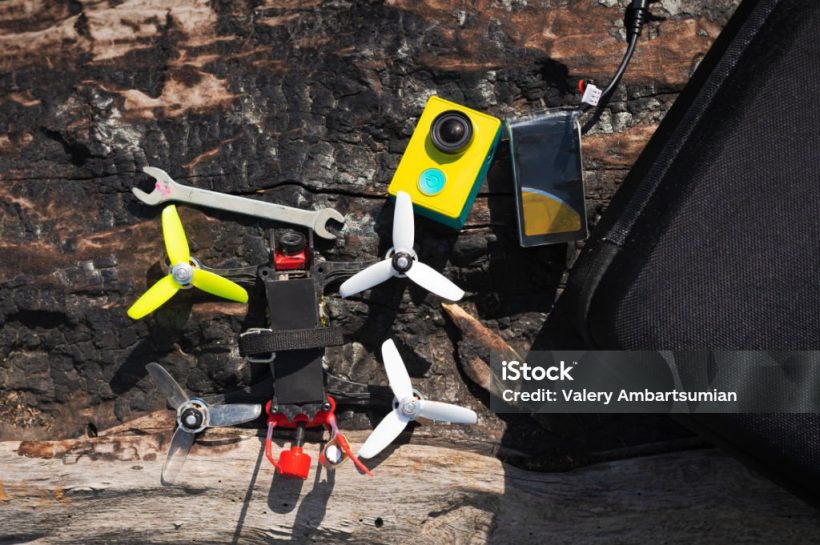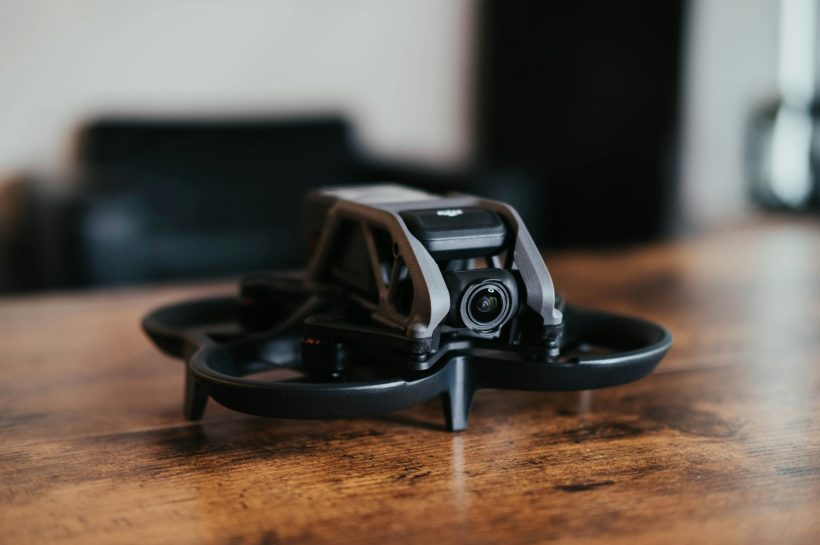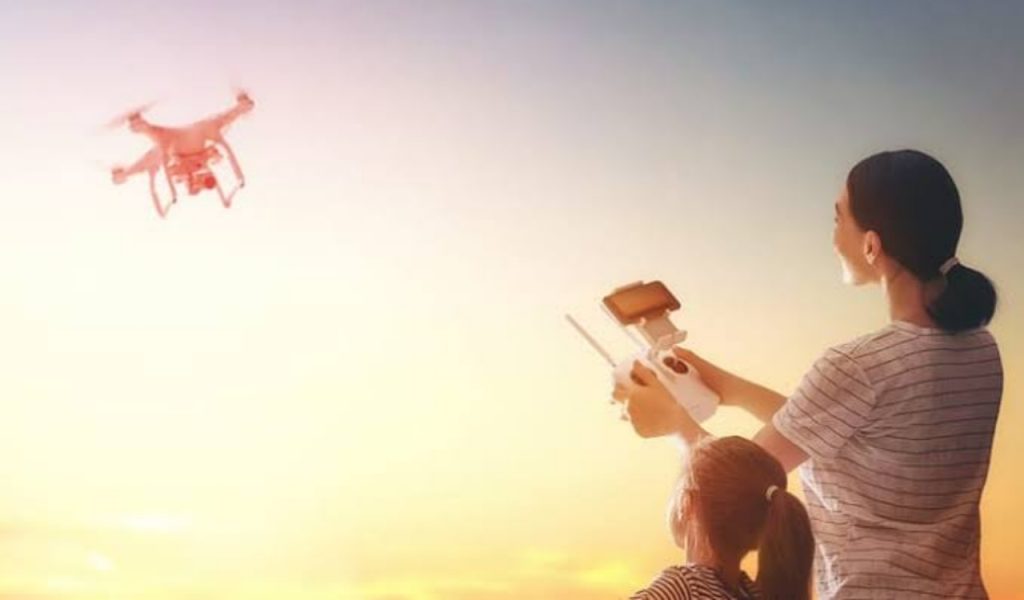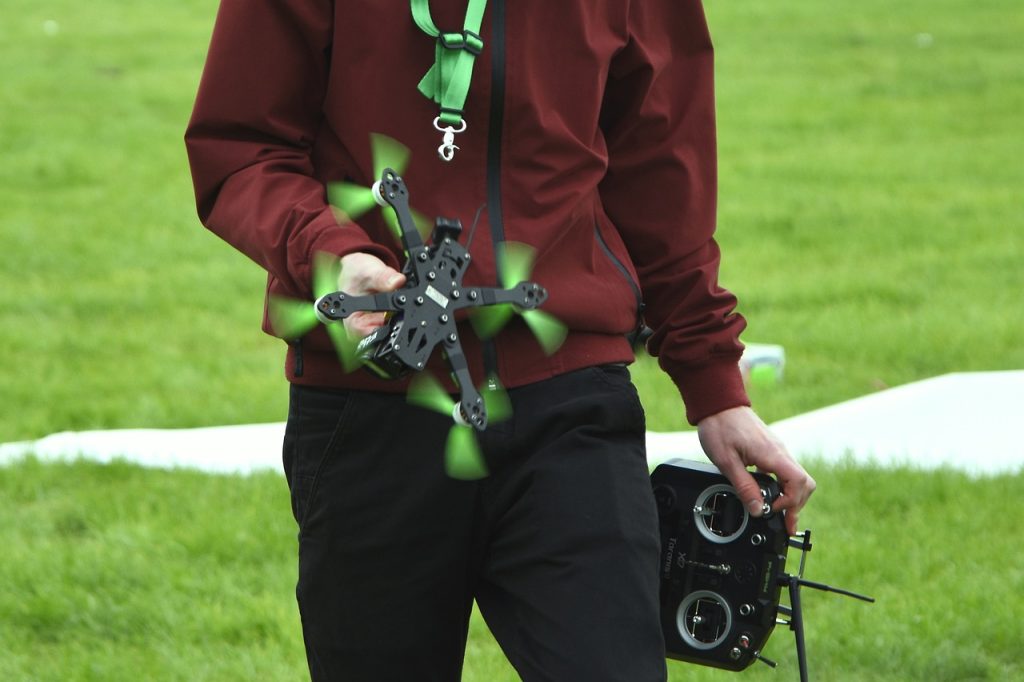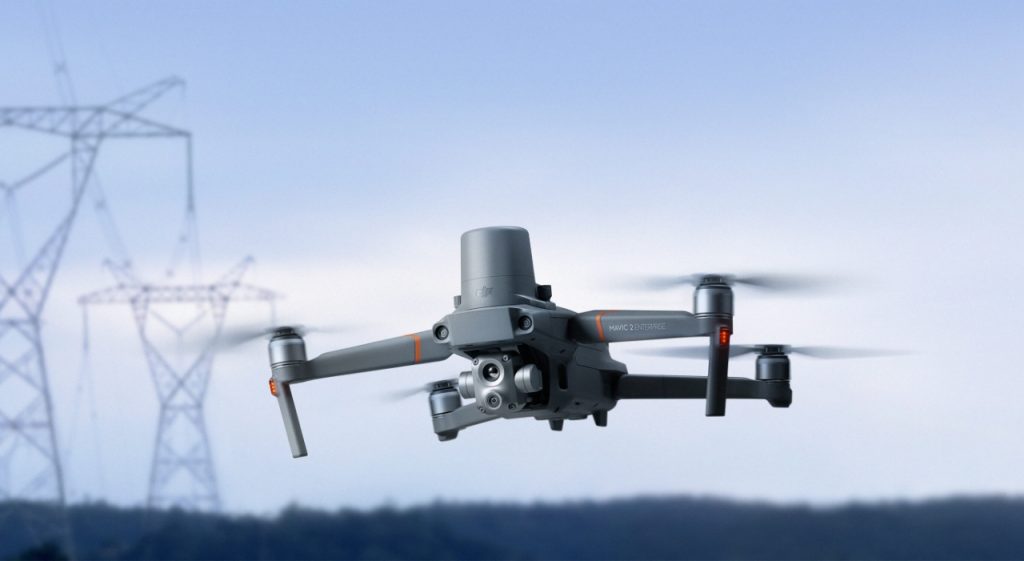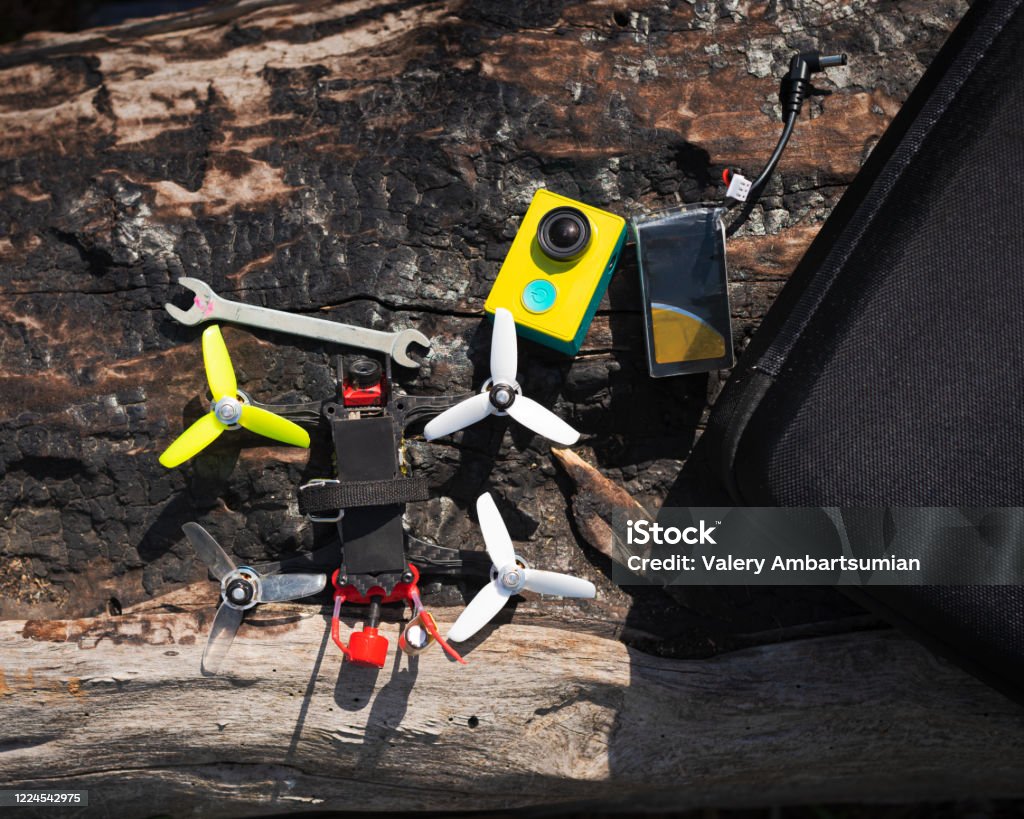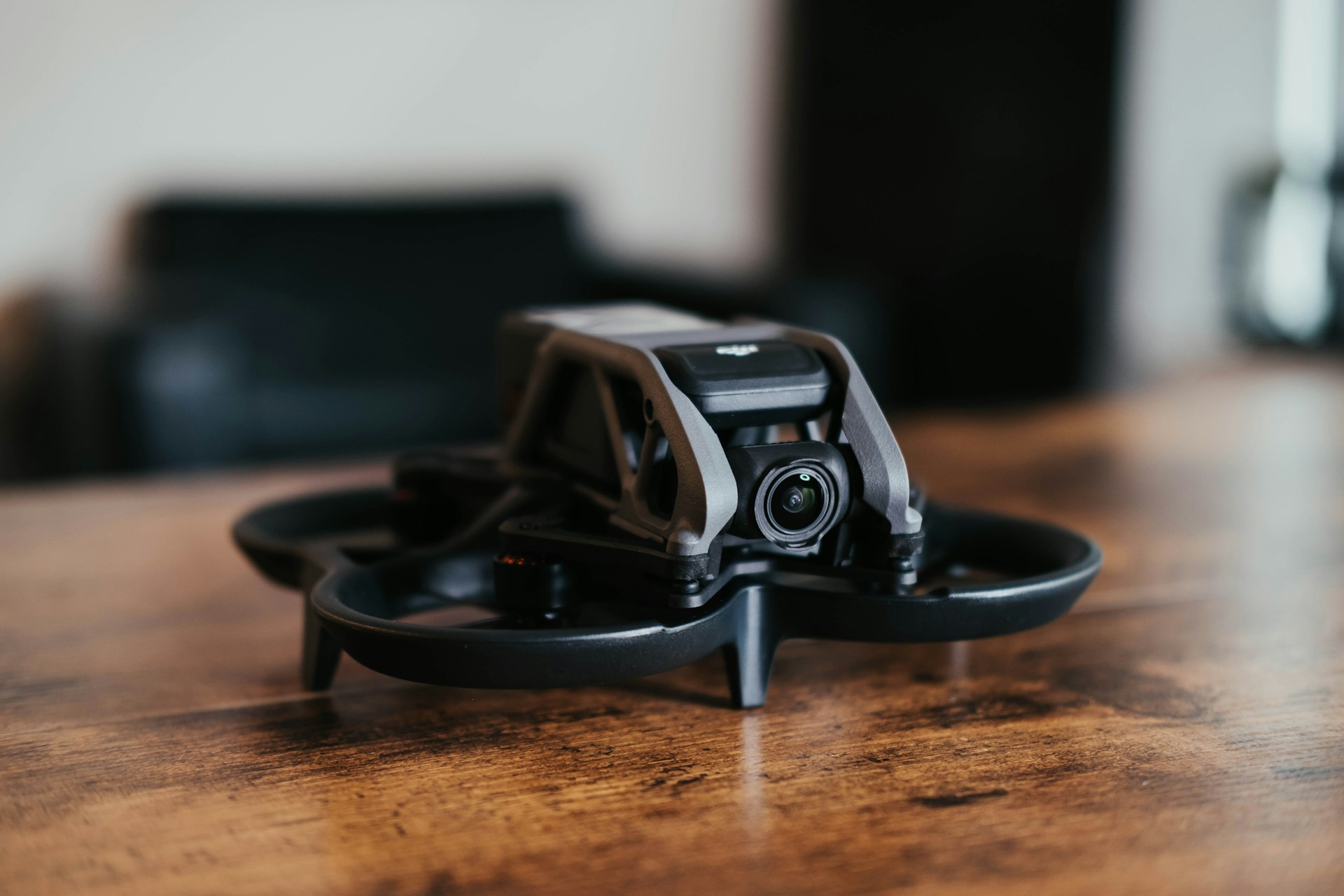Drones have become increasingly popular in recent years, and it’s not hard to see why. They offer a unique perspective on the world, and the ability to capture stunning aerial footage. Whether you’re a hobbyist looking to have some fun, or a professional looking to capture footage for a project, flying a drone can be an exhilarating experience. However, it’s important to approach drone flying with caution and respect for the safety of others and the law. In this beginner’s guide to safe and fun flying, we’ll take you through everything you need to know to get started with drone flying. From the regulations and safety guidelines to choosing the right drone and mastering the controls, read on for a comprehensive guide to drone flying.
Introduction to the world of drones
Welcome to the exciting world of drones! Drones, also known as unmanned aerial vehicles (UAVs), have taken the world by storm with their versatility and endless possibilities. Whether you’re a photography enthusiast looking to capture stunning aerial shots, an outdoor adventurer seeking a new perspective, or simply curious about this rapidly evolving technology, flying a drone can be an exhilarating experience.
The beauty of drones lies in their ability to soar through the skies and provide a bird’s eye view of the world below. From recreational flying to professional applications such as aerial photography, videography, mapping, and even delivery services, drones have revolutionized various industries and opened up a new realm of possibilities.
In this beginner’s guide, we will take you through the basics of drone flying, including essential safety tips, regulations to abide by, and key considerations to ensure a safe and enjoyable flight experience. So buckle up, get ready to spread your wings, and let’s dive into the fascinating world of drones!
Understanding drone regulations and guidelines
Before you take flight with your new drone, it’s crucial to understand the regulations and guidelines set in place to ensure safe and responsible flying. Different countries and regions may have specific rules governing drone usage, so it’s essential to familiarize yourself with the laws in your area.
In the United States, the Federal Aviation Administration (FAA) has established rules for recreational drone pilots, including requirements such as registering your drone, flying below 400 feet, and avoiding flying near airports and restricted airspace. Additionally, drones must always be within your line of sight while flying, and flying over groups of people or moving vehicles is generally prohibited.
Beyond legal regulations, it’s also important to adhere to safety guidelines to prevent accidents and protect both people and property. This includes conducting pre-flight checks on your drone, ensuring a safe flying environment free of obstacles, and being mindful of weather conditions that could impact flight stability.
By taking the time to understand and follow drone regulations and guidelines, you can enjoy flying your drone safely and responsibly while avoiding potential legal issues and safety hazards.
Choosing the right drone for beginners
Choosing the right drone for beginners is crucial to ensure a positive flying experience. As a beginner, it’s important to start with a drone that is user-friendly, easy to control, and durable. Look for drones specifically designed for beginners, often labeled as “entry-level” or “beginner-friendly.”
Consider factors such as size, weight, flight time, and features when choosing a drone. Smaller drones are generally easier to control and are less intimidating for beginners. Opt for a lightweight drone that is easy to maneuver, especially if you’re new to flying.
Flight time is another important consideration. Beginners may want to start with a drone that has a decent flight time to allow for practice and learning. Look for drones with at least 10-15 minutes of flight time per battery charge.
Features such as altitude hold, headless mode, and one-touch takeoff and landing can make flying easier for beginners. Altitude hold helps maintain a stable flight, headless mode simplifies directional control, and one-touch functions make flying more intuitive.
Lastly, choose a drone that is durable and can withstand minor crashes and bumps. Beginner pilots are likely to have accidents while learning to fly, so a sturdy drone that can handle some rough landings is ideal.
By selecting the right drone for beginners, you can set yourself up for a safe and enjoyable flying experience as you embark on your drone pilot journey.
Essential accessories for safe flying
When it comes to flying drones, having the right accessories is crucial for ensuring both safety and enjoyment. These essential accessories can greatly enhance your flying experience and help you avoid any mishaps that may occur. Here are some must-have accessories for safe flying:
1. Extra Batteries: One of the most important accessories to have is extra batteries. Drones typically have limited flight times, so having spare batteries on hand will allow you to extend your flying sessions without interruption.
2. Battery Charger: A reliable battery charger is essential for keeping your drone powered up and ready to fly. Make sure to invest in a quality charger that is compatible with your drone’s batteries to avoid any issues.
3. Propeller Guards: Propeller guards are crucial for protecting both your drone and people around you. They help prevent damage to the drone’s propellers and reduce the risk of injury in case of accidental collisions.
4. Carrying Case: A durable carrying case is essential for safely transporting your drone to different locations. It will protect your drone from damage during travel and make it easier to carry all your accessories in one place.
5. Memory Card: If your drone has a camera, a high-quality memory card is essential for storing your photos and videos. Make sure to choose a card with sufficient storage capacity and a fast write speed to capture all your aerial footage.
6. Landing Pad: A landing pad provides a designated landing spot for your drone, protecting it from debris and ensuring a safe takeoff and landing. It also helps maintain a clean and level surface for smoother flights.
By investing in these essential accessories, you can enhance the safety and enjoyment of your drone flying experience. Remember to always prioritize safety and follow local regulations when flying your drone. Happy flying!
Pre-flight checklist and safety precautions
Before taking to the skies with your drone, it’s crucial to go through a pre-flight checklist and adhere to safety precautions to ensure a safe and enjoyable flying experience. Start by checking your drone’s battery levels and ensuring it is fully charged. Inspect the propellers for any signs of damage or wear and make sure they are securely attached. Verify that the drone’s firmware is up to date and that the remote controller is functioning properly.
Next, find a suitable flying location that is away from crowded areas, airports, and other no-fly zones. Check the weather conditions and avoid flying in high winds, rain, or low visibility. It’s important to maintain visual line of sight with your drone at all times and to avoid flying near people, animals, or buildings.
Additionally, familiarize yourself with the local drone regulations and airspace restrictions in your area. Always fly your drone responsibly and respect the privacy and safety of others. Finally, consider purchasing liability insurance for your drone to protect yourself in case of any accidents or damage.
By following these pre-flight checklist and safety precautions, you can ensure a safe and enjoyable drone flying experience while minimizing the risk of accidents or mishaps.
Basic drone flying techniques
When it comes to flying a drone, mastering basic flying techniques is essential for a safe and enjoyable experience. Before taking your drone to the skies, it’s crucial to familiarize yourself with the basic controls and maneuvers. Here are some key techniques to keep in mind:
1. Practice Hovering: Start by practicing hovering in place at a low altitude. This will help you get a feel for the sensitivity of the controls and how to maintain a steady hover.
2. Mastering Takeoff and Landing: Learning how to take off and land smoothly is fundamental. Practice taking off gently, maintaining a steady altitude, and landing softly to avoid any damage to your drone.
3. Understanding Directional Controls: Get comfortable with the directional controls of your drone, typically consisting of throttle, yaw, pitch, and roll. Understanding how these controls affect the movement of your drone is crucial for maneuvering effectively.
4. Fly in Open Spaces: When starting out, choose a wide-open space free of obstacles to practice your flying techniques. This will give you room to maneuver and reduce the risk of collisions.
5. Maintain Line of Sight: Always keep your drone within your line of sight while flying. This will help you maintain control and avoid potential hazards.
6. Practice Basic Maneuvers: Experiment with basic maneuvers such as flying in different directions, making turns, and adjusting altitude. Practice these maneuvers to build confidence in your flying skills.
By mastering these basic drone flying techniques, you’ll be well on your way to becoming a skilled drone pilot. Remember, practice makes perfect, so dedicate time to honing your skills and always prioritize safety while enjoying the thrill of flying your drone.
Troubleshooting common issues
When it comes to flying drones, troubleshooting common issues is a skill every pilot should have in their repertoire. As a beginner, encountering technical difficulties or unexpected problems can be frustrating, but with the right knowledge and tools, you can overcome these challenges and get back to enjoying your flying experience.
One common issue that many drone pilots face is connectivity problems between the remote controller and the drone. If you find that your drone is not responding to commands or is experiencing signal interference, try recalibrating the drone and controller. Ensure that both devices are fully charged and that there are no obstructions blocking the signal.
Another frequent issue is battery-related problems, such as short flight times or sudden power loss. To troubleshoot battery issues, always follow the manufacturer’s guidelines for charging and storing your drone batteries. If you notice a significant decrease in flight time, it may be time to replace the battery.
GPS signal loss is another common issue that can disrupt your flight experience. If your drone is having trouble maintaining a stable GPS connection, try flying in an open area away from tall buildings or other sources of interference. Additionally, ensure that your drone’s firmware is up to date and that you have a clear line of sight to the sky.
By familiarizing yourself with these common issues and their solutions, you can enhance your flying skills and ensure a safe and enjoyable drone piloting experience. Remember to always prioritize safety and adhere to local regulations when flying your drone.
Tips for capturing amazing aerial footage
Capturing amazing aerial footage with your drone can be an exhilarating experience. To ensure you get the best shots possible, here are some tips to keep in mind.
1. Plan Your Shots: Before taking off, have a clear idea of the shots you want to capture. Consider the scenery, lighting conditions, and the overall composition of your footage.
2. Fly Smoothly: To achieve professional-looking footage, practice flying your drone smoothly and steadily. Avoid sudden jerky movements and aim for fluid, cinematic shots.
3. Use Manual Camera Settings: Experiment with manual camera settings such as exposure, white balance, and shutter speed to customize your footage according to the lighting conditions and desired effect.
4. Utilize Intelligent Flight Modes: Many drones come equipped with intelligent flight modes such as Follow Me, Point of Interest, and Waypoints. These modes can help you capture dynamic footage with ease.
5. Pay Attention to Composition: Just like in photography, composition plays a key role in creating visually appealing footage. Experiment with different angles, heights, and framing techniques to add depth and interest to your shots.
6. Edit Your Footage: Once you’ve captured your aerial footage, take the time to edit and enhance it using video editing software. Adjust colors, add music, and trim unnecessary footage to create a polished final product.
By following these tips, you can elevate your drone flying experience and capture stunning aerial footage that will impress and inspire your audience.
Where to fly your drone legally
Before taking your drone to the skies, it’s crucial to understand where you can legally fly it. Many countries have strict regulations in place to ensure the safety of airspace and individuals on the ground. Familiarize yourself with the laws and guidelines specific to your location to avoid any potential fines or legal issues.
One of the best places to fly a drone legally is in designated areas such as parks, open fields, or RC flying clubs. These areas are often equipped with amenities and safety measures to accommodate drone enthusiasts and ensure a safe flying experience.
Additionally, some countries have specific no-fly zones, such as near airports, military installations, or government buildings. It’s essential to respect these restrictions to prevent any interference with critical operations or sensitive areas.
If you’re unsure about where you can fly your drone legally, consider using drone mapping apps or websites that provide up-to-date information on restricted airspace and permissible flying zones. By adhering to the regulations and guidelines in place, you can enjoy flying your drone safely and responsibly.
Joining a drone community for support and learning
Joining a drone community can be a fantastic way to enhance your drone flying experience. These communities are filled with people who share your passion for drones and can provide a wealth of knowledge and support as you navigate the world of aerial photography and drone flying.
By joining a drone community, you can connect with experienced pilots who can offer advice on everything from choosing the right drone to flying techniques and photography tips. These communities often host meetups, workshops, and events where you can learn from others, share your own experiences, and even participate in friendly competitions.
Moreover, being part of a drone community allows you to stay updated on the latest trends, regulations, and technology in the drone industry. You can also seek help and guidance if you encounter any issues or have questions about drone maintenance, troubleshooting, or any other aspect of drone flying.
Overall, joining a drone community can not only help you improve your skills as a drone pilot but also provide you with a supportive network of like-minded individuals who share your enthusiasm for aerial photography and drone technology.
We hope this beginner’s guide to flying a drone has been helpful and informative for all aspiring drone pilots out there. Remember, safety always comes first when it comes to operating a drone, so be sure to follow all regulations and guidelines. With practice and patience, you’ll soon be soaring through the skies and capturing breathtaking aerial footage. Happy flying, and may your drone adventures be both safe and incredibly fun!
